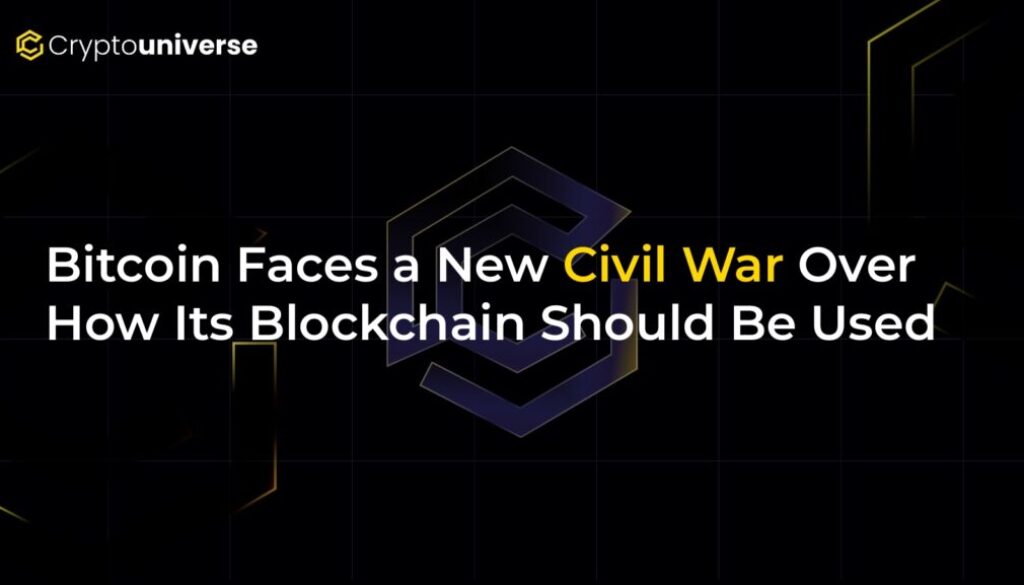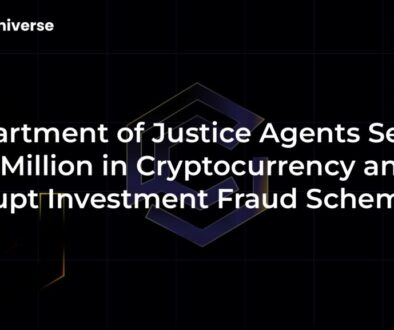Bitcoin Faces a New Civil War Over How Its Blockchain Should Be Used

A New Battle for the Soul of Bitcoin is Brewing
To the outside world, the Bitcoin community can seem like a united front, a monolithic army of believers dedicated to a single digital cause. But beneath the surface, a deep ideological rift is widening, threatening to ignite a new civil war. The central question is deceptively simple, yet it strikes at the very heart of what Bitcoin is and what it should become: Should the Bitcoin blockchain be used for more than just financial transactions?
This isn’t just a technical debate among developers. It’s a philosophical struggle pitting two powerful factions against each other, echoing past conflicts that have left permanent scars on the community. On one side, we have the established developers of Bitcoin Core. On the other, a rapidly growing movement rallies behind a new client called Bitcoin Knots. This clash of ideals will define the future of the world’s original cryptocurrency.
The Core of the Conflict: Data vs. Dollars
The idea of embedding non-financial data onto the Bitcoin blockchain isn’t new. In fact, Bitcoin’s very first block, the Genesis Block, contains a hidden message from its creator, Satoshi Nakamoto: “The Times 03/Jan/2009 Chancellor on brink of second bailout for banks.”
However, the recent explosion of projects like Ordinals, often called Bitcoin NFTs, has pushed this capability to its limits. These projects allow users to inscribe images, text, and even software onto individual satoshis, the smallest unit of Bitcoin. This has led to a surge in network activity and, crucially, higher transaction fees for miners.
This is where the battle lines are drawn. Is this innovation a brilliant new use case that helps secure the network, or is it spam that clogs the blockchain and detracts from its primary purpose?
Meet the Factions: The Pragmatists vs. The Purists
Two distinct camps have emerged, each with influential leaders and a passionate base of followers.
The Pragmatists: Bitcoin Core
Bitcoin Core is the most popular and historically dominant software client for running a Bitcoin node. The developers and supporters in this camp generally take a pragmatic view. They argue that allowing more data on the blockchain is a positive development for several reasons:
- New Use Cases: It promotes innovation and expands what’s possible on the Bitcoin network.
- Miner Revenue: It generates significantly more fee revenue for miners. This is critical for network security as the block reward—the new bitcoin created with each block—continues to halve every four years.
For proponents like developers Peter Todd and Jameson Lopp, this is a practical way to ensure Bitcoin’s long-term viability and growth.
The Purists: Bitcoin Knots
The rival faction is coalescing around Bitcoin Knots, an alternative client led by influential and long-time developer Luke Dashjr. This group views the influx of non-financial data as a corruption of Satoshi’s original vision. Their arguments are rooted in a desire to preserve the blockchain’s integrity:
- Protecting the Network: They decry the data inscriptions as “spam” that bloats the blockchain, making it more difficult and expensive for ordinary users to run a full node.
- Avoiding “Scam Adjacency”: They are wary of the speculative and often scam-ridden world of NFTs and see these projects as a dangerous distraction from Bitcoin’s mission as a peer-to-peer electronic cash system.
The name “Knots” itself is a powerful statement. It’s reportedly a reference to the “whip of knots” that Jesus used to drive the money changers from the temple—a clear signal of their intent to purify the network.
History Repeats: Echoes of the Block Size Wars
For veterans of the crypto space, this conflict feels eerily familiar. It hearkens back to the brutal Block Size Wars of 2015-2017. That fight was over whether to increase Bitcoin’s 1MB block size limit to accommodate more transactions. The “small blockers,” who argued for keeping the limit to ensure decentralization, ultimately won. The conflict was so divisive that it resulted in a hard fork, creating the rival cryptocurrency Bitcoin Cash (BCH).
The bad blood from that era never truly disappeared, and many of the same ideological fault lines are re-emerging in this new debate. The current fight over data is, in many ways, a continuation of the old war over space.
Why This New Matters
This is more than just online drama. The Knots client has already gained significant traction, with some estimates suggesting it’s used by over 20% of Bitcoin node operators. If this number continues to grow, it could pose a serious challenge to the network’s consensus.
The outcome will answer a fundamental question about Bitcoin’s identity. Is it a pristine, immutable ledger for a new global money? Or is it a robust, multi-purpose platform that can support a wider range of decentralized applications? The direction Bitcoin takes from here will have profound consequences for its entire ecosystem, from miners and developers to investors and everyday users.
While the factions remain at war, they still gather to worship their common creator. At a recent conference in Lugano, Switzerland, leaders from both sides came together to unveil a restored statue of Satoshi Nakamoto. They may be fighting for the soul of Bitcoin, but for now, they still believe in the same god.


